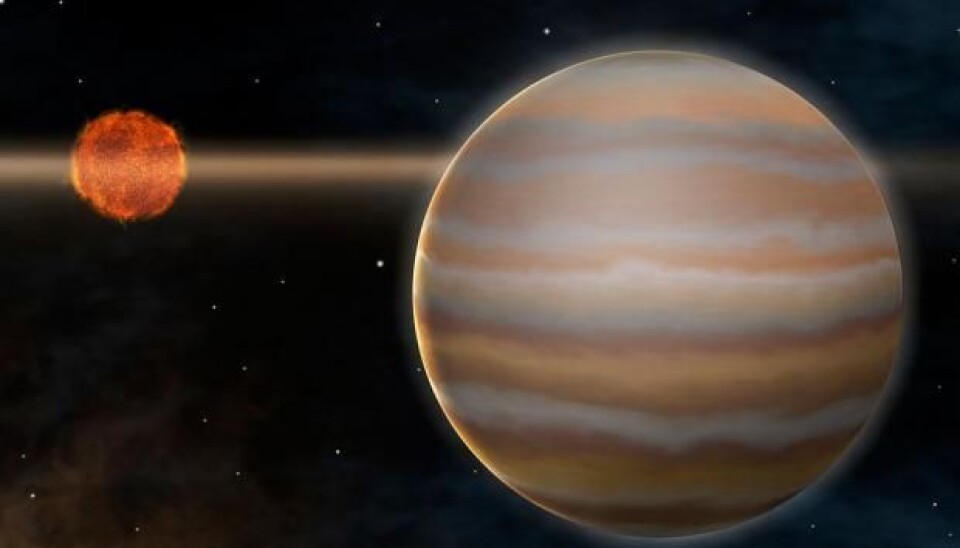
New telescope to find life in space
Danish researchers have designed a new telescope technology which they claim is 300 times more effective than the current ones.
We may be only ten years away from answering the age-old question ”Is there life in space?”
Scientists at Aarhus University have developed a new telescope that will expand our understanding of other solar systems.
They have created a new telescope which is faster, more sensitive to light and uses a brand new camera technique, known as micro lens technology, which can immediately filter out pictures with atmospheric noise.
It will enable scientists to observe much smaller planets in other solar systems, so-called exoplanets, than previously possible. And before long, we'll have the answers to some pretty big questions:

”For 3,000 years we have been asking ourselves 'How does our solar system differ from others?', 'Are we unique?', 'How many planets are similar to Earch?' Within ten years we'll have the answers to those questions,” says Uffe Gråe Jørgensen, an astrophycisist at the University of Copenhagen.
He leads the exoplanet-section of the international SONG project (see box below). He leads a team of 25 researchers, based at Aarhus University, who have spent the past nine years working on the new technology.
100 new planets a year
Having just completed the prototype of the new telescope, the team is now starting the second phase of the project. This will involve building and setting up eight telescopes in observatories around the world. The telescopes will form a global network of 24-hour systematic planet observation.
Scientists have so far had limited access to obervations of stars and planets, since such undertakings work best at night, for obvious reasons. With the new global network, however, they will be able to observe the night sky around the clock – when it's daytime at one observatory, it's nighttime at another one.

The network will be controlled remotely, regulated by a computer and put on auto-function at night. ”Our calculations suggest that we can find around 100 new planets a year, and at some point we'll find planets that look like ours,” says Jørgensen.
Looking for planets like earth
When scientists search for life in space they look for other planets in other solar systems – exoplanets – which are very similar in size to Earth and have a comparable orbit around their star.
There is greater probability of finding the conditions necessary for life on such planets because they have an atmosphere which often consists of rock rather than poisonous gases and because their distance from the star determines whether or not there will be liquid water.
Jupiter, for example, the fifth planet from our Sun, is shrouded in an atmosphere the main constituents of which are hydrogen and helium, with belts and zones of dense cloud. No living organism would be able to thrive there.
Telescope can find relatively small planets
If our calculations are correct, we can expect to find 100 new planets a year - and ultimately some that resemble our own.
Until now, astrophysics technology has mainly been able to observe exoplanets the size of our solar system's largest planet, Jupiter.
Since 2003, SONG has helped to identify ten exoplanets using current telescopes. The first exoplanet was observed in 1995 by a Swiss team, while the first Earth-like planet was observed from a Danish telescope in Chile in 2005. However, it had a surface temperature of minus 200 degrees Celsius.
With the new technology scientists will be able to systematically observe exoplanets right down to the size of Mars, which is around half the size of Earth.
Just like being out in space
The new telescopes are designed to carry out accurate readings of the speed and light intensity of the stars.
The new cameras have an exposure time of 1/30 of a second, which is the same rate at which the atmosphere changes. By constantly taking 30 pictures per second and rejecting those that have an unclean atmosphere, the resulting sharpness will make it seem as though you're out there in space yourself. This will make it possible to see more planets, especially smaller ones.
”The methods and the telescopes we've been using up to now are not well suited to see planets the size of earth. It's fair to say that the new telescope is 300 times more effective than the current ones,” says Jørgensen, who expects the first SONG telescope to be up and running within a month.
Read the article in Danish at videnskab.dk
Translated by: Dann Vinther








